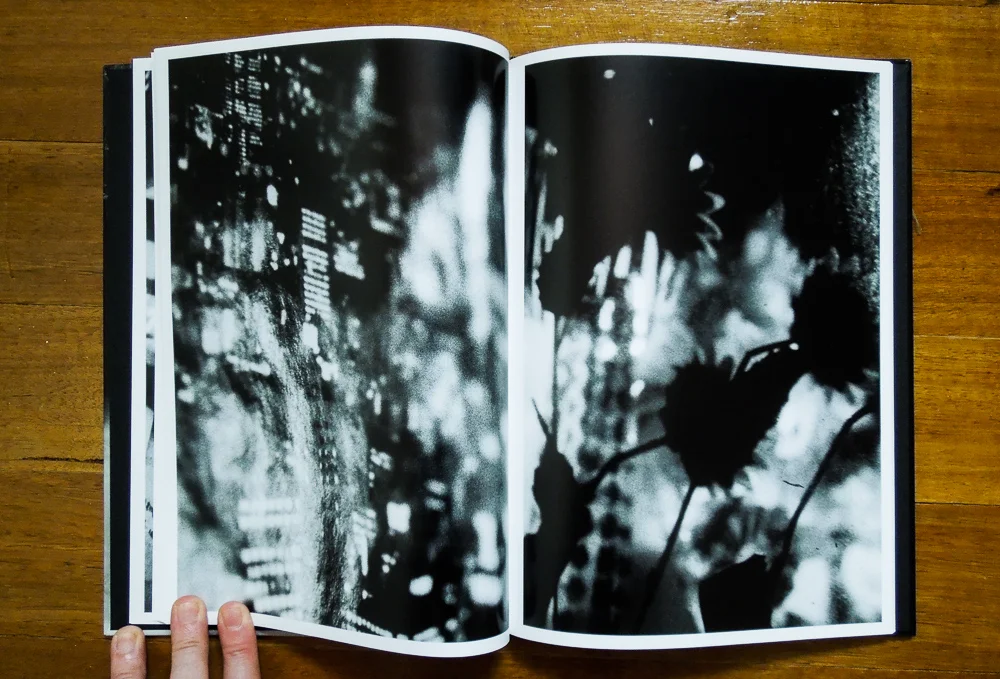Bibo - Mariko Shindo
I have reviewed quite a few books now. As a process for me its very rewarding. I get to sit and take in the images in the books and the consolidate my thoughts about them here. It serves a double purpose really. Firstly it actually gives me a reference point, almost like a library of my thoughts about the wonderful books that I am lucky enough to own. Secondly, it provides a point for people to come and read about some of the books themselves. This book is a little different to the others that I have written about thus far. This is one of the books that I purchased on my trip to Japan. It really is something that will be a bit of a love or hate type deal. I knew nothing of Mariko Shindo before leaving for Japan, but I am very happy that I was able to find out a little about her through the pages of her book. Since admiring the book itself I have been trying to find out more about her, but havent found a good source yet.
I spoke a little in my post on the trip to Tokyo about one of the shops that I found that was attached to a publishing house. The place was called Sokyu-Sha, and it also had a little gallery attached. This is where I found this book. I spent hours in there slowly thumbing through all the books and trying to not go too crazy due to a mix of luggage weight restrictions on the flight home, as well as credit card limits on various spending devices.
Bibo was one book that was never going to be left on the shelves. I am going to try and do it justice here, but the type of images that are in the book are a little hard to do justice in text alone. Mariko manipulates these images in the Darkroom. I would love to have some lessons with someone that has developed this kind of craft to this level. Its also not a craft that is left with many technicians these days either.
Its kind of funny really. These types of images are just not understood by the masses. People who dont come from an artistic photography mindset when looking at this work would think that they are basically mistakes. The images are amazing, but I think the fact that they would be misunderstood to a certain extent by the everyday camera carrying individual, and even maybe more so, by the digital generation, adds something to the work for me.
It seems like its work that flies in the face of the digital age. Its work that no one would be able to replicate in the camera alone. Its not something that even the best of photoshop manipulators would be able to replicate and do justice. There is a good reason for this. The images are organic. They have a life of their own, and an organic and natural image like this is not something that the digital age has been able to duplicate yet.
This goes to the crux of one of the main differences between digital and film, and its not something that I am going to spend too much time discussing in a book review, but its very relevant to the heart and soul of what I think this book is all about.
Film grain and tones have an organic nature to them. Its analogue. Its the processes and chemistry that has to be applied to them to bring out the magic from the silver within. The two fold process starting with the exposure of the film, and then exposure of the paper in the printing process. Its these very processes that Mariko has been able to understand to such a degree that she is able to almost bend them to her will in her work.
Digital media has its place in this world, there is no arguing that fact. However, there is no replicating the time and effort that would have gone into perfecting these images. I think you will find that most darkroom technicians are highly introverted and cherish the time they get to spend alone in the dark. I am a little envious of the amount of time Mariko would have been able to spend getting lost in the creation of this work.
As someone that shoots film and prints in a darkroom myself, I can only imaging the number of test prints and time that would have gone into making each and every one of the photos in Bibo. The type of process that was used would further enhance the organic nature of the image. This is due to the lack of control that is available to some extent over the finished product. Im not trying to distract from the skill involved here, but in at least some of the photos the end result would have been achieved through a certain amount of trial and error.
There is a period of photography in Japan knows as Provoke. Its something that I am very interested in, and I try and trawl whatever information I can find on the work and the artists of this era. There is a Flickr group that is set up to showcase work that people who submit there have done to try and walk in the shoes of the masters of this amazing period of photography in Japan. What a lot of people would struggle to understand about this type of photography is just how hard it is to make great images with this type of method. Its just too easy to take things a little beyond what is acceptable and end up with something that is essentially shit.
I would challenge anyone to go out and try to make an out of focus image like this. Its tough. The hard thing is that you effectively strip out all the emotional content that is provided by subjects in the form of people. People add things to an image the really only people can add. The fact that Mariko has been able to strip the images back to the bare bones and still have the level of emotion that is present is testament to the artist. Its another reason why the work would challenge the average persons ability to accept it as special.
One of the biggest challenges with this series would have been to reinsert some form of emotion back into the images. I dont think I can conjurer up a memory of a photograph that I thought was a strong image that didnt contain emotion. Emotion in photography is something thats essentially quite easy to portray badly. Showing emotion successfully, with the result being an improvement and building of the image is both essential to great work in my mind, as well as extremely difficult.. It goes to the center of why people connect with certain images. I also speaks volumes about why there is such a difference of opinion as far as tastes from one persons perception to the next.
People are emotional beings. They thrive off it. But one person will thrive off a different emotional connection than the next. Thats why I made it clear at the start of the review that this work is not for everyone. The pure nature of the image, and the textural and natural structure of the grain and composition is what keeps me coming back to this book though. I hope that I have been able to do it just a little justice with these words.
The fact that I lost track a little in this post and started to talk more about myself and my own tastes says a lot about the connection I feel to this work. Its unique in so many ways, and I love spending time getting lost in the world that one is able to create within the pages. I have no other photo book where the reader is in as much control of their perceptions and reactions to the images.
I have talked a lot about the feeling of connection you get to the artist in a good book. The allowance that Mariko has made for the reader to be involved in the story creation in Bibo takes this to a slightly different level. Sorry if thats a little philosophical and confusing, I dont know how else to say it.
I do understand that not everyone will be able to take a trip to Japan to get their own copy of Bibo. You are however able to order your own through the guys at Japan Exposures.









